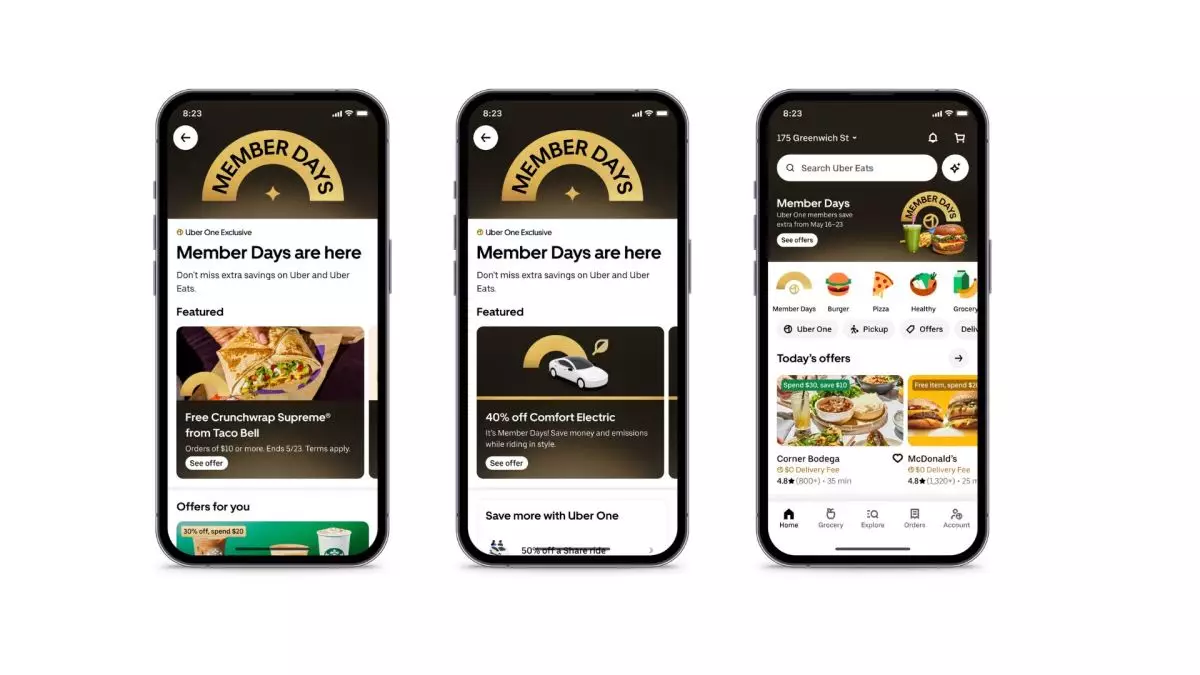In a rapidly changing digital landscape, companies must evolve to remain relevant. Uber, once synonymous primarily with ride-hailing, is currently amplifying its ambitions significantly. The ride-sharing platform is transitioning into a multifunctional super app, echoing the trajectory of tech giants like Amazon. This transformation hints at a broader strategy to embed Uber deeply into the daily lives of consumers. Unlike its early days, where the primary focus was on simply connecting riders with drivers, Uber now seeks to create a diverse ecosystem filled with various services that envelop users in a seamless experience.
Uber’s recent initiative, the Uber One Member Days, serves as a prime example of its strategic pivot. This event, which emulates Amazon’s famed Prime Day, suggests that Uber is not merely interested in transportation but aims to build loyalty through varied offerings that entice both existing and potential members. While being a member today means access to exclusive deals on ride options, the integration with food delivery, groceries, and even entertainment signifies a far-reaching goal to establish Uber as an indispensable part of daily life.
Creating Value Through a Comprehensive Service Model
The crux of Uber’s transformation lies in its burgeoning membership model, Uber One. By collecting millions of subscribers, Uber is reaping rewards with enhanced customer loyalty. Uber CEO Dara Khosrowshahi reported that members typically showcase significantly higher spending habits—three times more than non-members. Such statistics underline a critical insight: Fostering a sense of belonging and providing extensive value can lead to sustainable revenue. This aligns with the modern consumer’s expectation for convenience, variety, and accessibility in one platform.
As Uber seeks to amplify its partnerships, there’s a clear focus on appealing to lifestyle choices beyond mere transportation. The announcement of tie-ups with retail giants like Home Depot echoes this ambition, portraying the brand as a versatile tool in consumers’ lives. These collaborations add depth to Uber’s offerings, tapping into the lifestyles of consumers in creative and nuanced ways. Imagine booking a ride while also ordering groceries or scheduling home improvement services—all through a single platform.
Harnessing Data and Technology for Personalization
Another layer to this transformation is Uber’s strategic utilization of data analytics and technology. By integrating a more sophisticated understanding of user behavior, Uber can tailor its marketing strategies, creating hyper-personalized offers that resonate with their customer base. The introduction of enticing promotions—such as discounts on eateries and bonuses for travel rewards—acts as bait for users, not just to sign up as members but to engage more actively with the app.
Few would argue that one of the greatest luxuries in today’s fast-paced world is time. If Uber can position itself as a solution that not only meets mobility demands but also handles other facets of everyday life, it stands a good chance to cement its position as a lifestyle-oriented platform. The right mix of convenience, savings, and diversity in service offerings could very well propel Uber to the forefront of consumer preferences.
Future Challenges and Opportunities
However, as Uber embarks on this ambitious venture, it faces substantial challenges. Competition remains fierce, with traditional players and emerging rivals continually improving their services. To separate itself from the pack, Uber must establish a narrative that transcends mere discounts and deals. The brand needs to embody a lifestyle choice, like how consumers perceive Amazon today—a hub that integrates multiple facets of life into a single, user-friendly interface.
Moreover, the sustainability of Uber’s model hinges on its ability to manage partnerships effectively and ensure that every interaction remains user-centric. As demand for convenience rises, failures in logistics or unfulfilled offers could tarnish its burgeoning reputation. By rigorously vetting partnerships and maintaining high standards, Uber can promote a trajectory that enhances trust and reliance on its platform.
Uber’s audacious venture into becoming a super app is indicative of a broader trend toward multifaceted digital ecosystems. As consumer expectations evolve, so too must the companies that cater to them. For Uber, the road ahead is lined with potential and pitfalls, but if its strategy is executed effectively, it could translate from a mere transport service into an essential fabric of modern life.

